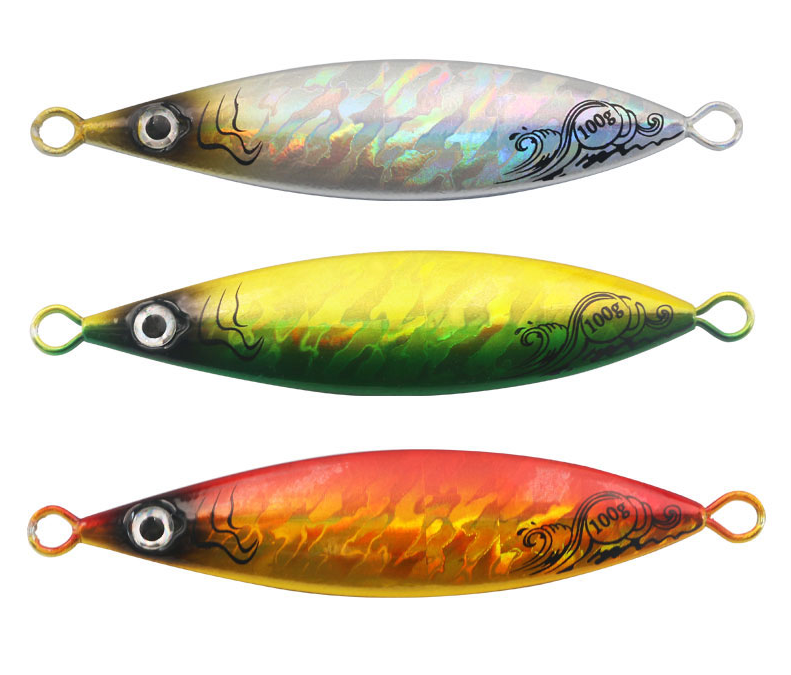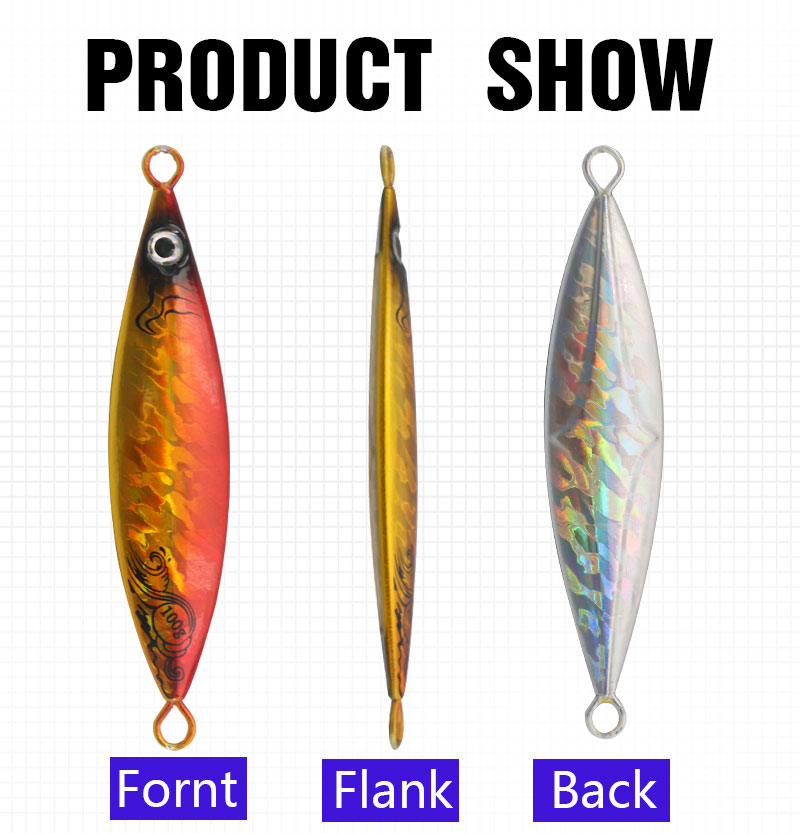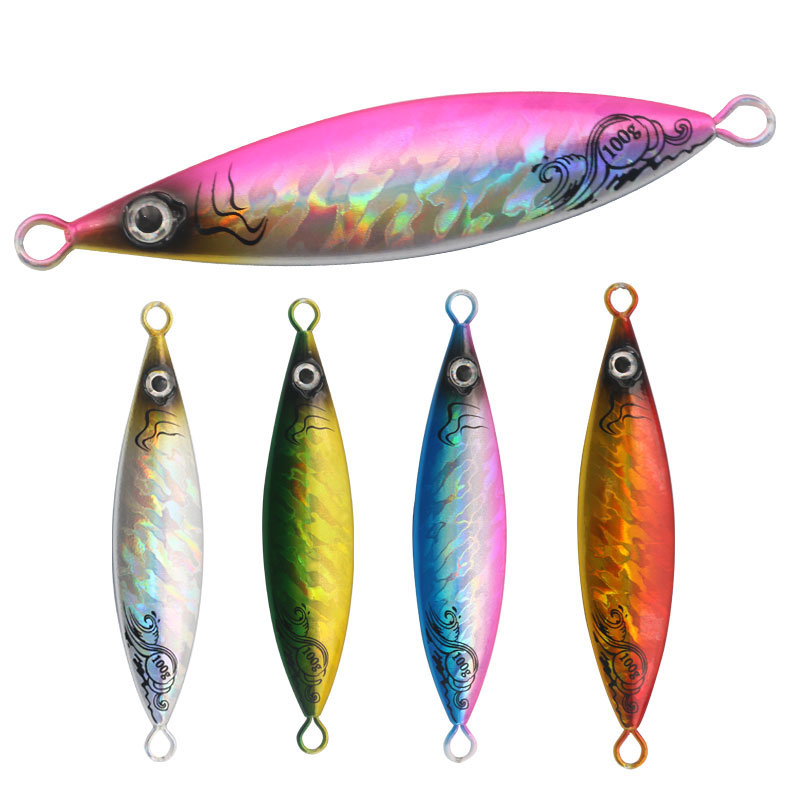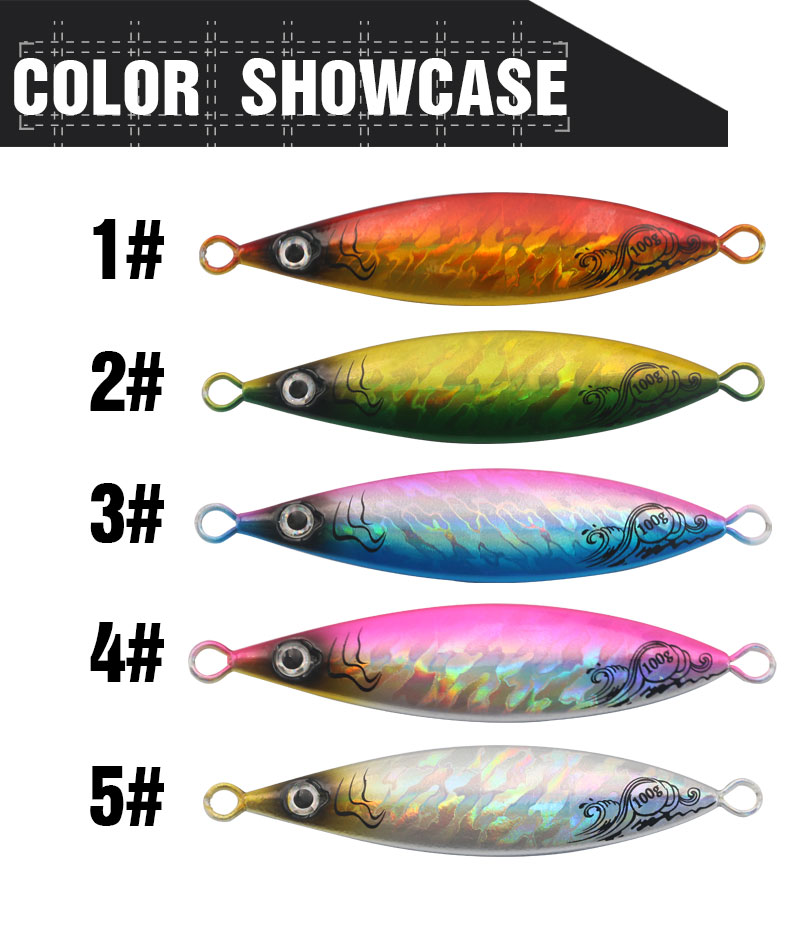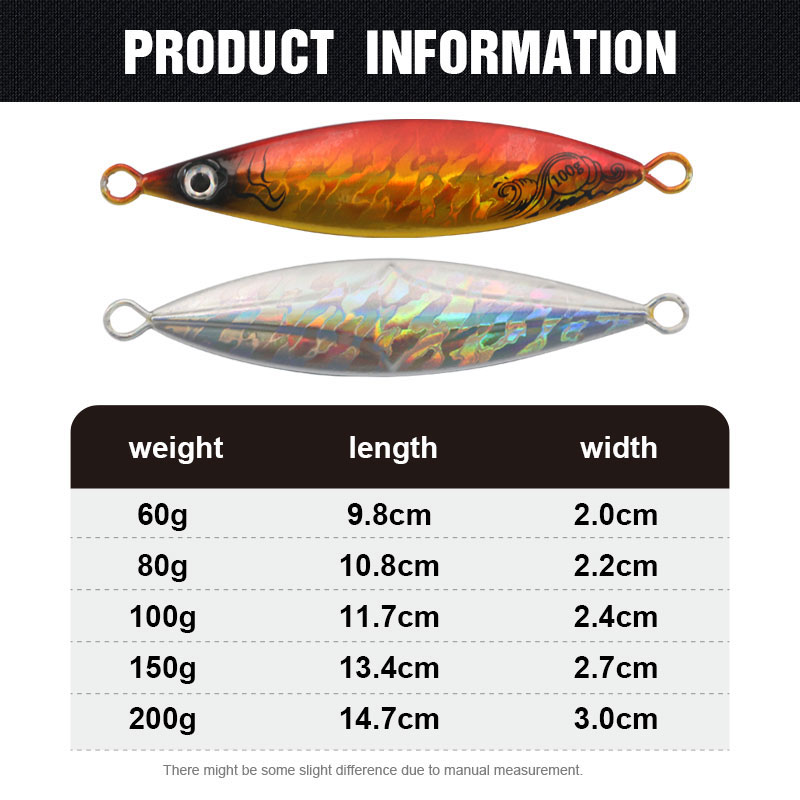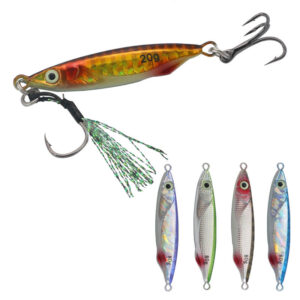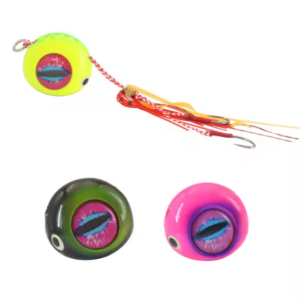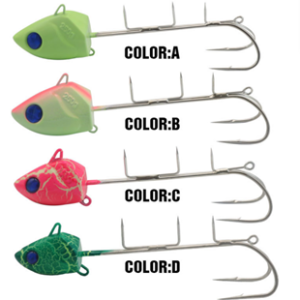Small Metal Lead Fishing Lure Slow Jigging with Hooks for Bass Shark and Marlin in All Waters
Metal jig fishing has gained immense popularity in the angling world due to its efficiency, versatility, and effectiveness across various fishing conditions.
추가 정보
| Color | optional |
|---|---|
| Material | Lead, metal |
| Weight | 60g,80g,100g,150g,200g |
| Model | TX-18 |
| Package | PVC Bag |
Product Details:
소개
Metal jig fishing has gained immense popularity in the angling world due to its efficiency, versatility, and effectiveness across various fishing conditions. Whether you’re a beginner or an experienced angler, understanding how to properly use metal jigs can significantly enhance your chances of landing your target species. These simple yet powerful tools can be used to catch a wide variety of fish in both deep and shallow waters, from tuna and kingfish to snapper and grouper. In this guide, we’ll break down everything you need to know about metal jig fishing, including choosing the right gear, mastering essential techniques, and optimizing your fishing experience.
What Makes Metal Jigs a Must-Have for Every Angler
Metal jigs are an essential tool in any angler’s tackle box for a number of reasons. Here’s why they’re so effective:
- Fast Sinking Power: Due to their dense construction, metal jigs sink quickly, allowing you to target fish at deeper depths or in areas with strong currents. This speed is essential for fishing in challenging conditions.
- Realistic Action: When jigged properly, these lures mimic the erratic movements of a distressed baitfish, a behavior that predators find irresistible. This natural action increases the chances of attracting a bite.
- 내구성: Unlike soft plastics, which are susceptible to wear and tear, metal jigs are made from sturdy materials that can withstand multiple strikes and rough fishing environments.
- Versatility Across Species: Metal jigs are effective for a variety of species. Whether you’re targeting pelagic fish like tuna or bottom-dwellers like snapper, metal jigs can be tailored to catch virtually any fish.
- Ease of Use: Metal jigs require minimal setup, making them perfect for both beginners and experienced anglers. With just a few simple techniques, you can start fishing effectively with metal jigs right away.
Choosing the Right Metal Jig for Your Fishing Adventure
The first step to successful metal jig fishing is choosing the right jig for the conditions you’re fishing in. Here’s what to consider when selecting your metal jig:
- Weight:
- Light Jigs (20g – 60g): Ideal for shallow water fishing or when targeting species near the surface.
- Heavy Jigs (80g – 300g): Best for deep-water fishing or in areas with strong currents where the jig needs to sink quickly.
- Shape:
- Slim Jigs: These sink quickly and work well for high-speed jigging or when fishing in deeper waters.
- Flat or Wide Jigs: These are designed for slow-pitch jigging, offering a more exaggerated flutter on the drop, ideal for bottom feeders.
- Curved Jigs: Often used for fast, erratic jigging to imitate a fleeing fish, perfect for aggressive predators like tuna and kingfish.
- Color:
- Bright/Reflective Colors: Ideal in clear water or when you need to mimic the shine of a baitfish.
- Glow or UV Colors: Best for low-light conditions or murky waters, as they enhance the jig’s visibility.
- Hook Type and Quality: Ensure the jig is equipped with high-quality hooks—preferably strong assist hooks that are less likely to bend or snap under pressure, especially for larger fish.
Mastering Metal Jigging Techniques for Success
To make the most out of your metal jig fishing experience, mastering the right techniques is crucial. Here are the most effective methods to use:
- Vertical Jigging:
- How It Works: Drop the jig straight down to the bottom and work it by raising and lowering the rod. This vertical motion mimics a baitfish that is struggling to swim.
- When to Use: Ideal for deep-water fishing or when targeting bottom-dwelling fish like snapper, cod, and grouper.
- High-Speed Jigging:
- How It Works: Retrieve the jig rapidly with sharp, quick jerks. This action imitates a fleeing fish that is being chased by a predator.
- When to Use: Perfect for fast-swimming species like tuna and kingfish, which are attracted to fast-moving prey.
- Pro Tip: Use braided line for better sensitivity and responsiveness to fast bites.
- Slow-Pitch Jigging:
- How It Works: Slowly drop the jig to the desired depth and then jerk it gently, creating a subtle fluttering action that resembles a fish in distress.
- When to Use: Ideal for bottom-dwelling species or when fish are less active.
- Pro Tip: Slow-pitch jigging requires patience, but it’s highly effective in deeper waters where fish are sluggish.
- Casting and Retrieving:
- How It Works: Cast the jig out and retrieve it steadily, occasionally adding pauses or small twitches to make it appear like a struggling baitfish.
- When to Use: Best for shallow waters or areas with visible fish, as the slower retrieve lets the jig stay in the strike zone longer.
- Long Drop Technique:
- How It Works: Let the jig sink slowly to the bottom, then retrieve it slowly to mimic an injured or dying fish.
- When to Use: Great for when fish are more cautious or when fishing in deep waters with lower activity levels.
- Pro Tip: The long drop can work wonders in cold water or when fish are feeding slowly.
Where to Fish with Metal Jigs: The Best Locations
Knowing where to use your metal jigs can increase your chances of success. Here are some top locations to target with metal jigs:
- Reefs and Wrecks: Fish love to congregate around structures such as reefs, wrecks, and drop-offs. Metal jigs are perfect for getting down to the fish quickly in these areas, where many species hunt for food.
- Deep-Water Fishing: The sinking power of metal jigs makes them ideal for deep-sea fishing. Whether you’re targeting species like snapper, grouper, or halibut, the fast sinking of a metal jig lets you reach the deeper layers of the water column.
- Areas with Strong Currents: Metal jigs work well in areas with strong tides and currents. The weight of the jig helps it stay in place, making it effective even in fast-moving waters where lighter jigs would be swept away.
- Shallow Water: While typically used for deeper fishing, metal jigs can also be successful in shallow waters when retrieved at slower speeds or with a more erratic motion, attracting species like bass, pike, or trout.
- Open Ocean: For pelagic species like tuna, mahi-mahi, and kingfish, metal jigs are a top choice. Their shiny profile and lifelike action can draw in predators from a distance.
Pro Tips for Improving Your Metal Jig Fishing Game
- Use the Right Rod and Reel: A sensitive, fast-action rod and a reel with a high gear ratio are crucial for detecting subtle bites and making fast retrieves. Using braided line increases sensitivity and allows for better hook-setting power.
- Vary Your Speed and Motion: Experiment with different retrieve speeds, pauses, and jigging techniques until you find the rhythm that works. Fish can be picky, so adapting is key.
- Match the Local Baitfish: Choose a jig that closely resembles the size and color of local baitfish. If you’re fishing near schools of small minnows, for example, use a small, shiny jig to imitate them.
- Pay Attention to Water Conditions: Adapt your choice of jig based on water clarity, depth, and current speed. In murky waters, go for brighter or glow-in-the-dark colors. In clear waters, opt for natural colors like silver, gold, or reflective finishes.
- Stay Patient: Sometimes the best catches take time. Metal jigs can require you to make repeated casts and retrieves to find the right technique. Don’t be discouraged if you don’t get a bite immediately.
결론
Metal jig fishing is an incredibly effective and versatile technique that every angler should add to their skill set. From choosing the right jig to mastering key techniques and understanding where to fish, this method offers countless opportunities to catch a variety of species. With a bit of practice and experimentation, you’ll soon be reeling in your dream catch, whether it’s a fast-swimming tuna or a bottom-dwelling snapper. So grab your metal jigs, get on the water, and start mastering this technique to elevate your fishing game!

